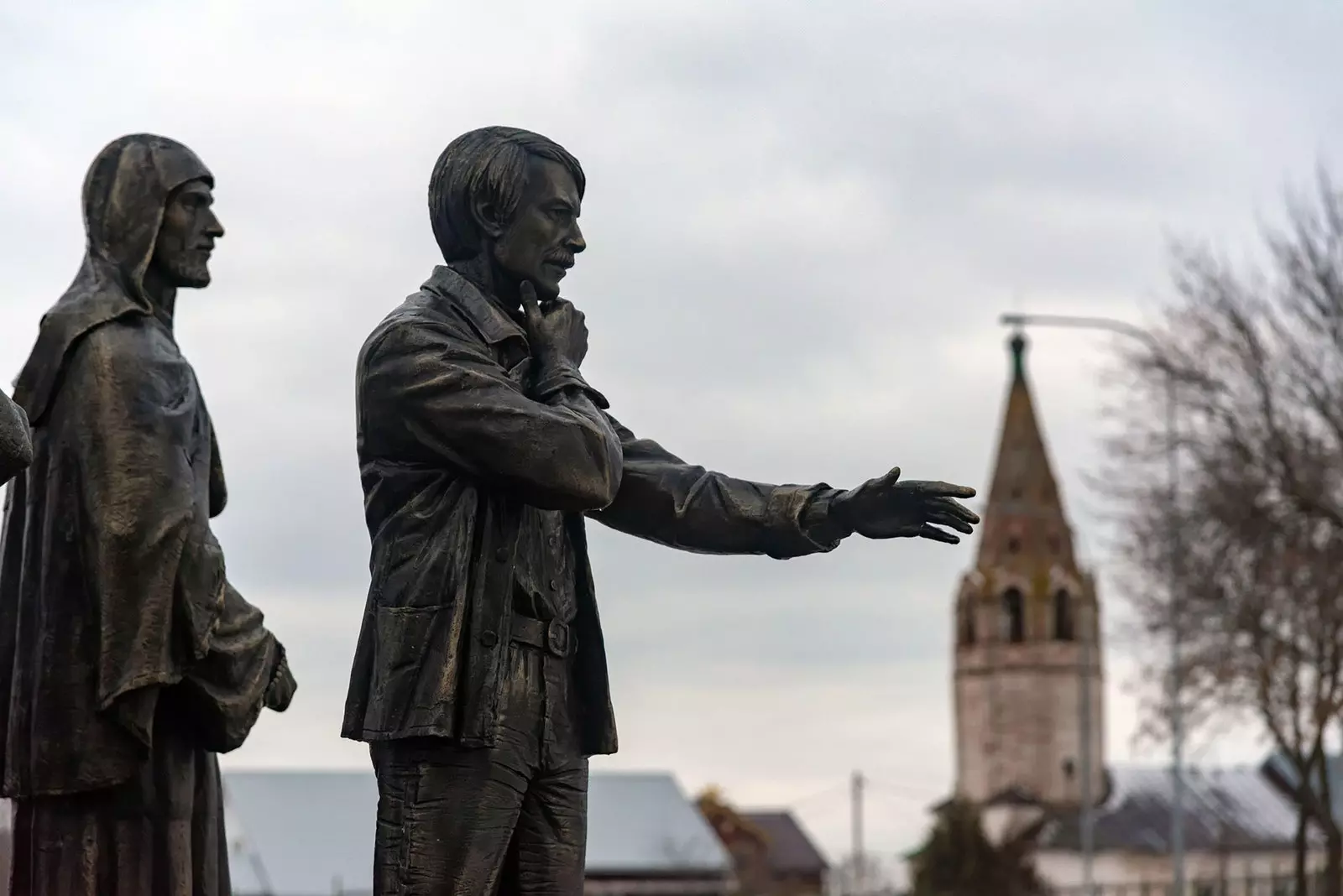
Monument of the painter Andrei Rublev and the filmmaker Andrei Tarkovsky, in Suzdal.
TRETYAKOV GALLERY, MOSCOW
Through the centuries of Russian painting exhibited by the Moscow Tretyakov Gallery, we go back in time until some almost clandestine stairs send us to what look like catacombs. Suddenly, the light dims, the visitors fall silent and the Middle Ages surround us. Orthodox medieval icons, with their hypnotic gazes, they hold us in a corner of the room to ask us for explanations. It is as if we became the painting and they, the visitors. Solemn and severe, they ask us to confess.
Among all of them, there is one whose luminosity reassures us. The angels of the Trinity (15th century) redeem us with their saving expression. On the board we see peace, harmony, love, humility, mercy... the same values that guided the life of its author, the religious painter Andréi Rublev. He is one of the quintessential artists of this country, whom many visitors already know thanks to the film of the same name (Andréi Rubliov, 1966) by the eminence of Russian cinema Andréi Tarkovski.
A teacher who inspires another and a faith (Rubliov's in God; Tarkovsky's in art, as if they were the same thing) that not only guide us through some of the most outstanding monuments in the region, but also help us to understand them. With this objective, Tarkovski makes us make a pilgrimage from this modern city to a muddy and gloomy XV century, exposed to the fraternal disputes of the boyars and the ruthless invasions of the Tatars.
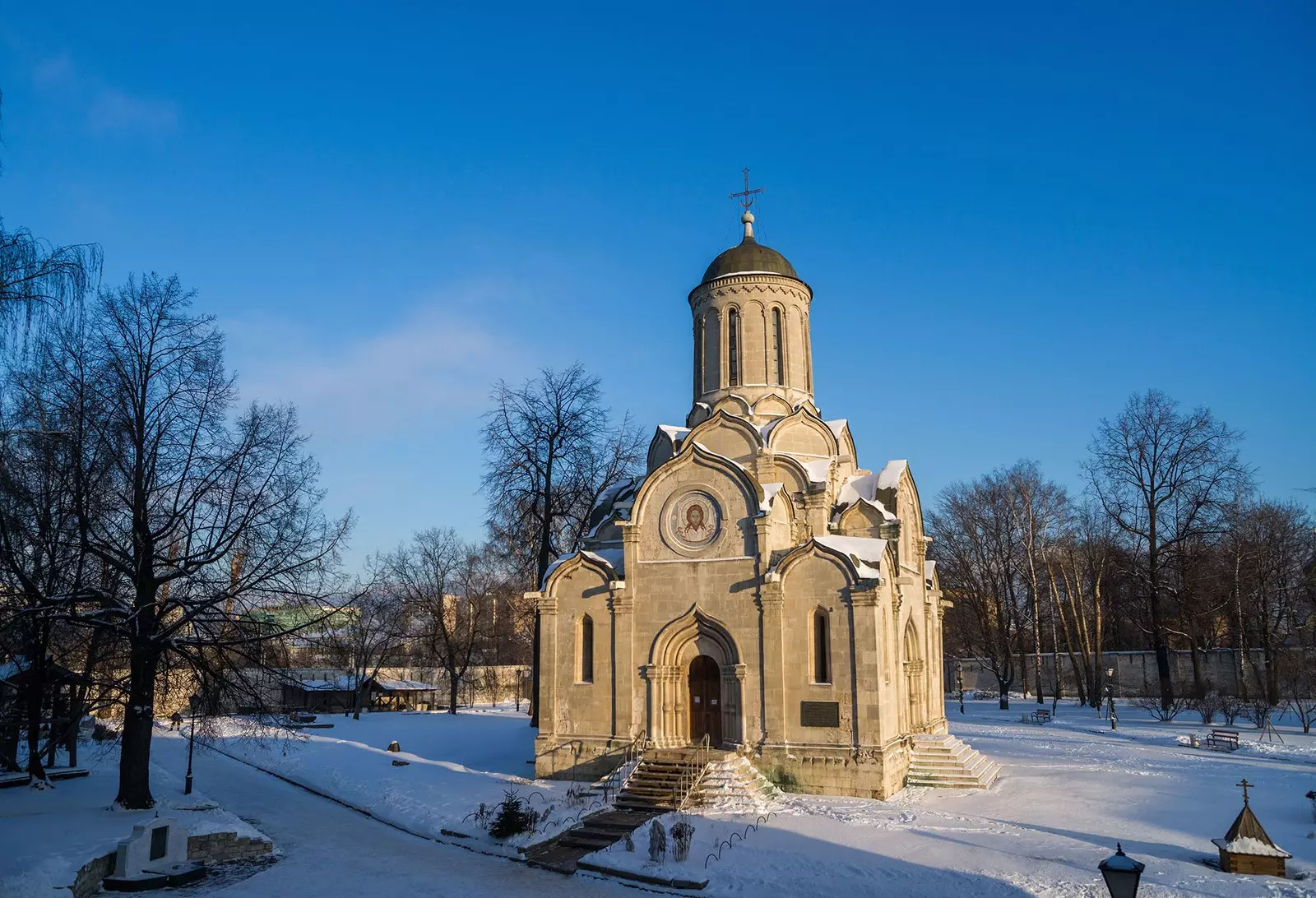
Savior Cathedral in the Andronikov Monastery in Moscow.
ANDRONIKOV, MOSCOW
If the first date with Rubliov's work is in the center of Moscow, We found the painter himself a few kilometers away, on the way to Andrónikov. It is the monastery where the artist lived and which currently houses the main museum of ancient Russian art, which bears his name. Walking along the current banks of the Moscova and Yaúza rivers, it is difficult to imagine the marshy meadows through which the monks then walked until they took refuge in the religious center.
However, today the monastery survives within its white walls, as an oasis among the bustle of highways, trams and shops that surround it. Poplars, oaks and birches help isolate it from this wild civilization and bring us a little closer to that mystical atmosphere that Tarkovski reflects in the film. a minimum of privacy to conserve this particular art collection.
Andronikov is one of the film's few landmarks, which presents an apparently chaotic structure. Here Rubliov will return years later. Meanwhile, dreams, digressions, visions, vague characters, satanic rituals, nature, meditation... A collage that spills over the seven chapters as if they were the scenes of an Orthodox iconostasis and that can be interpreted with reason or with the senses.
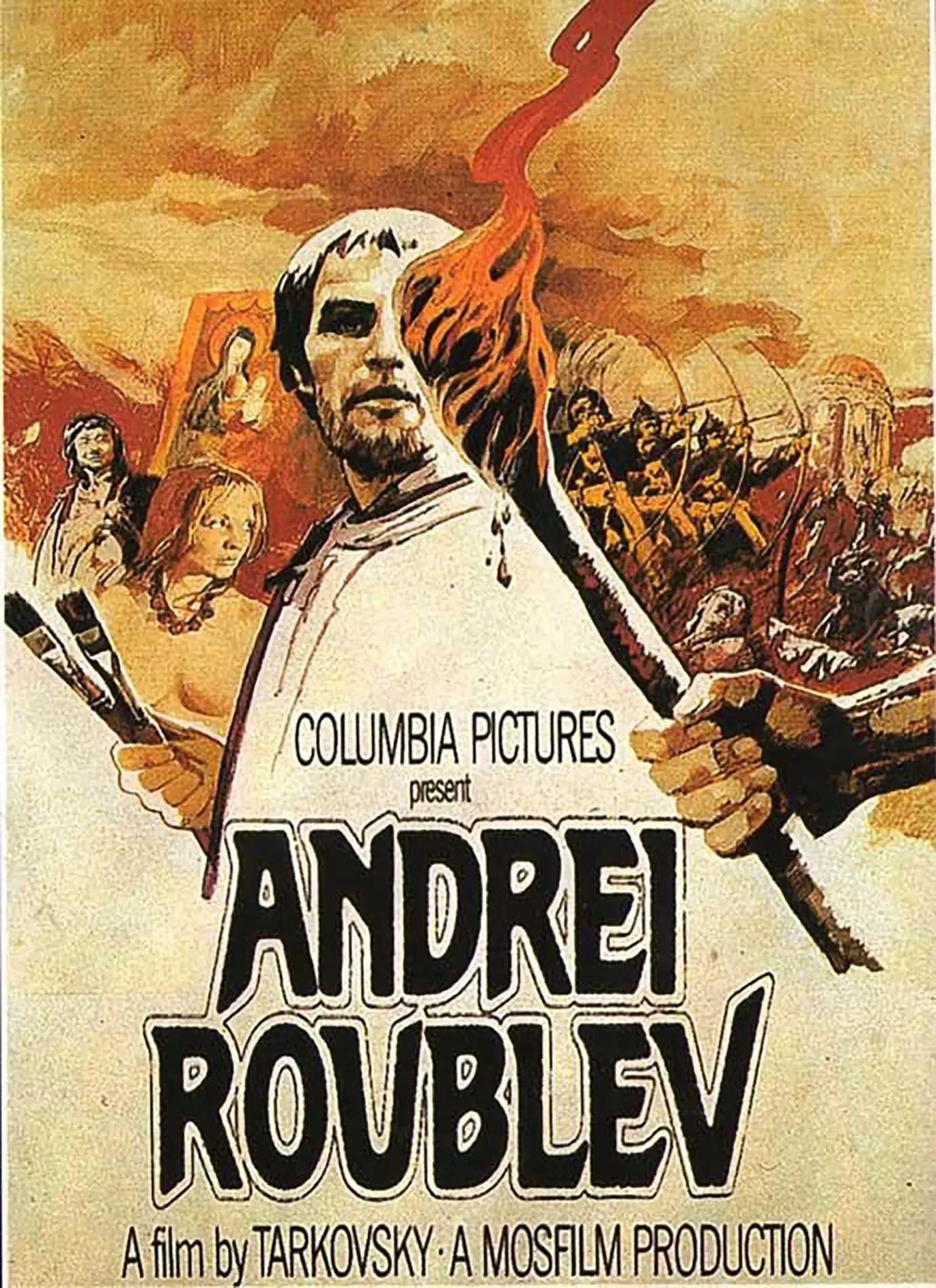
Tarkovsky movie poster.
At Andronikov we already sense in what key we should understand the monuments that await us, Rubliov's work or Tarkovsky's cinema: "In cinema it is not necessary to explain, but to act on the feelings of the spectator; the emotion that this arouses is what provokes thought", as the director wrote in 1962. Is it possible that a 1960s movie and a 15th century religious icon generate a similar effect on the viewer?
VLADIMIR
Yes, and not only them. Architecture is added. It is not necessary to embrace faith for the Dormition Cathedral in Vladimir to absorb us in a similar way. It is, perhaps, the key piece of the eight buildings that make up the World Heritage Site of the White Monuments of Suzdal and Vladimir and, without a doubt, the main attraction of this mediocre city 200 kilometers from Moscow.
In fact, since its entry, on a hill from which only the river Kliazma and a green plain to the horizon are visible, the city forgets itself and of time. The temple, like the neighboring cathedral of San Demetrio, seems to have fallen from the heavens, like the monolith of Odyssey in space. Compact, with simple golden domes, some engravings of intimidating creatures and its ancient pristine white walls, barely torn by narrow windows, take us back to the 12th century, when they were built.
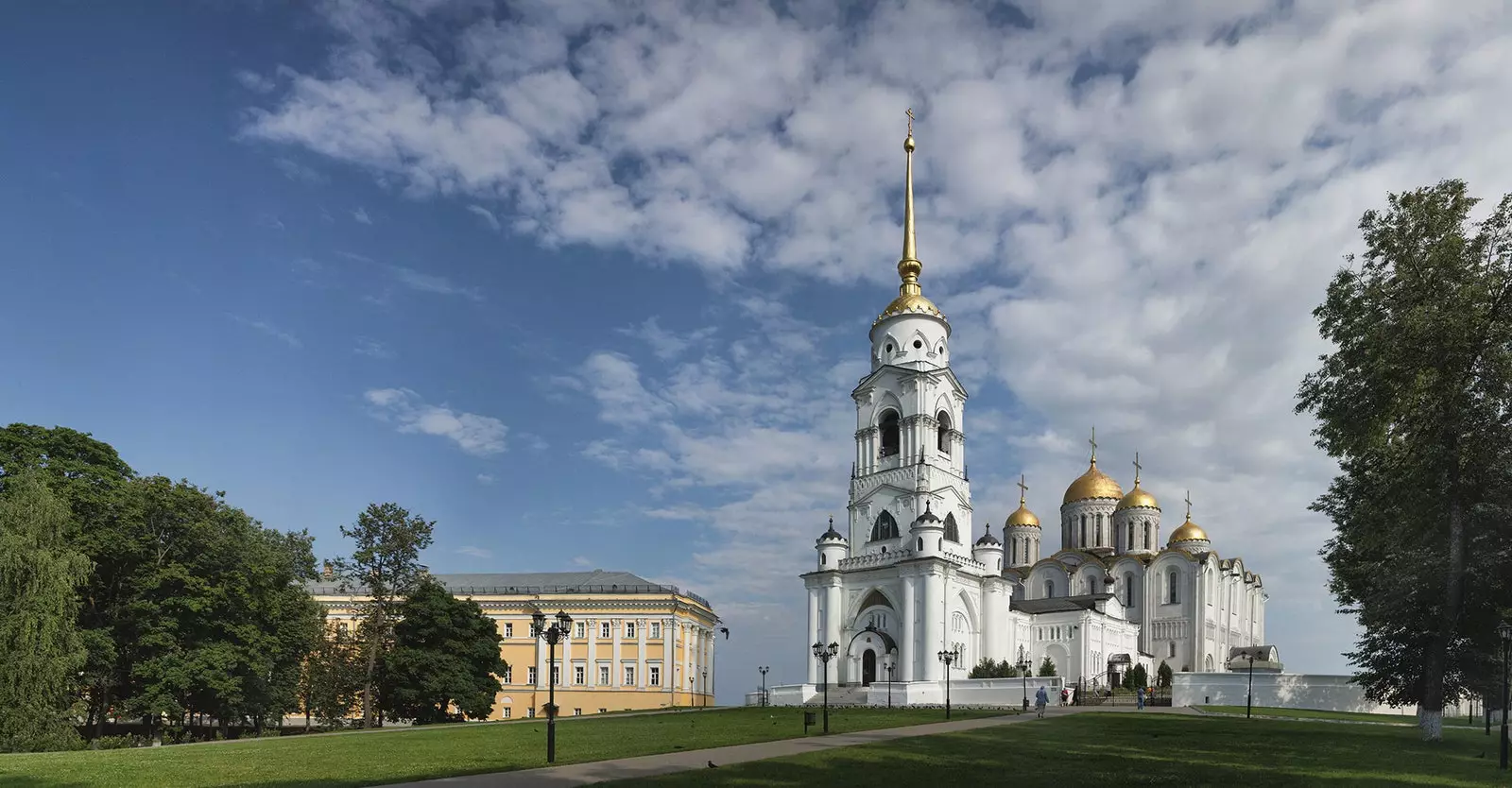
Cathedral of the Assumption (the Dormition) in Vladimir.
More impressive is the interior, where groups of humans wander with their heads up and their mouths open, lost in the gloomy labyrinth of corridors, arches and vaults that lead us to the iconostasis. Faces, robes, goblets, and halos turn corners and rise to the ceiling to tell us the story of what Rublev's first great creative crisis meant: considering that his commission (scenes of the Last Judgment) went against his values for trying to scare men, he decided to paint a large banquet, which can be seen almost intact dominating the main portico.
Though the film does not show Rublev painting at any time, in Vladimir we are aware of the impact of his work. Here our perception of Russian culture is marked, as linked to religion, as Rubliov's life was marked. Shortly after he completed these frescoes, the Tartars swept through and conquered the city. Under these same roofs, protected by God (or by art), the citizens took refuge until the invaders managed to open the doors to murder and rape the survivors. In the midst of battle, Rubliov kills a Russian mercenary and, faced with sin, begins a vow of silence that it will last fifteen years and that it will fulfill in Andrónikov.
With our hero speechless and determined never to paint again, In this devastated Vladimir, we don't have much else to do, so we're going north, to Suzdal.
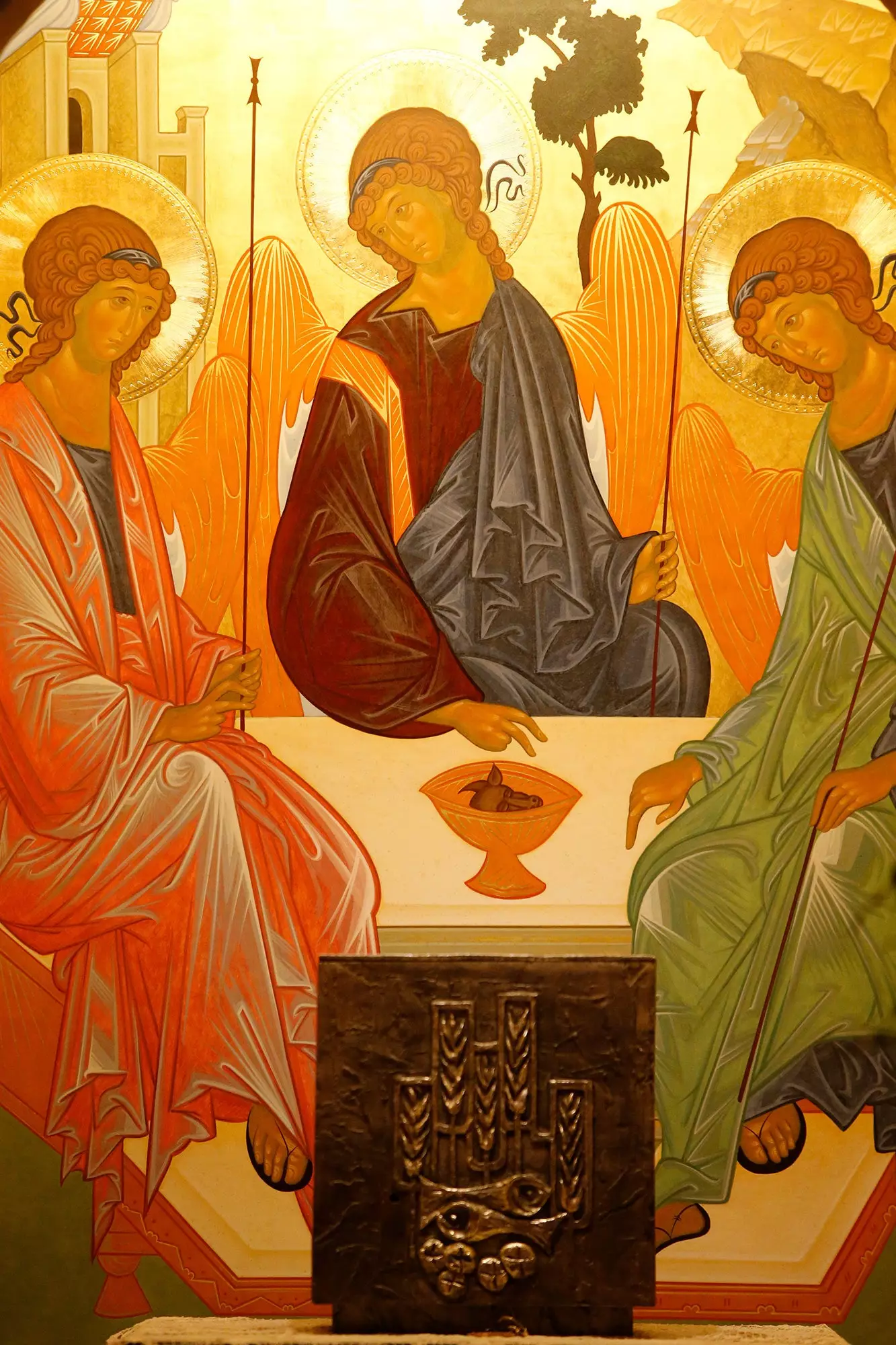
The Trinity (The Hospitality of Abraham), by Andrei Rubliov.
SUZDAL
Here we find the remaining three buildings of the eight that make up the Suzdal White Monuments World Heritage Site and Vladimir. Although it loses by two, this little town wins by far in quality. As we arrive, we find something unusual in Russia: a small intact old town is outlined in the distance with domes, bell towers, crosses and towers, which dot the lush nature that surrounds the area with turquoise, gold, blue and red colors.
Whether in its explosive summers or buried under the snow, Suzdal is where we best connect with the omnipresence that the four elements (and water in particular) possess in Tarkovsky's work. The town is articulated around the Kamenka river, from whose banks we see small wooden houses, the white Kremlin, the Nativity Cathedral or the red walls of the Savior Monastery and Saint Euthymius.
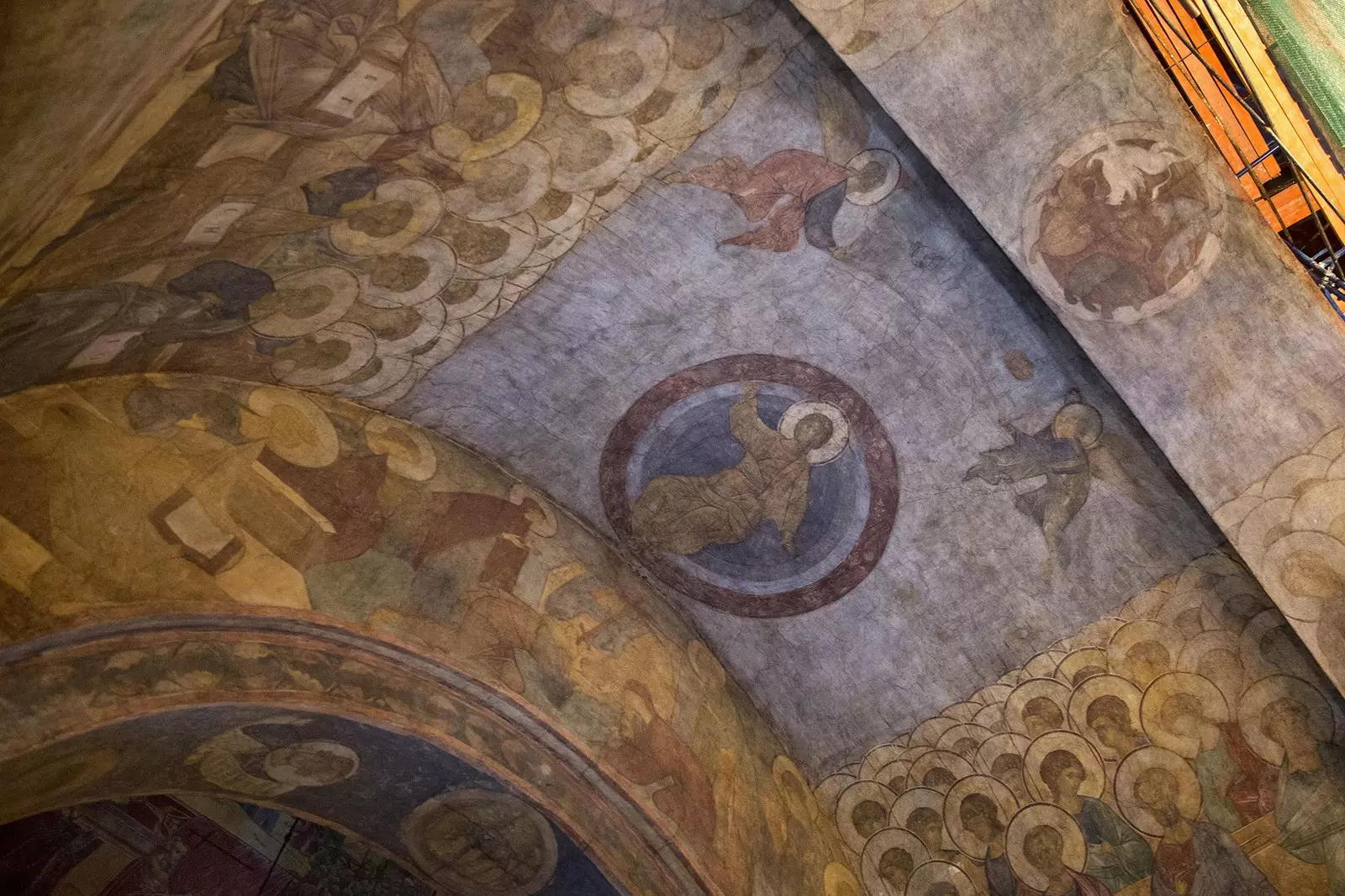
Andrei Rubliov's work in the Vladimir Cathedral.
Outside the latter we finally connect the dots when we meet the monument to "the greatest film of all times and nations, Andrei Rublev, and its creator, the great Russian director Andrei Tarkovsky.” In part, it is the end of our investigation, but above all it is the culmination of the film. The last chapter, The Bell, was shot here, in which a young man stars in the fiercest fight between a creator and his work. Literally life or death, because his head depends on the success of his company. The workers, the infrastructure, the setbacks, the snowfalls... everything adds up so that art becomes the axis of epic cinema.
Not only the images are overwhelming. This external and internal conflict towards an unattainable goal is what is truly epic, a tension that expresses the need to improve and that finds its catharsis in a scene that has little to envy a supernova: lying in a quagmire, the young man cries inconsolably in a mixture of relief, loss, discovery, loneliness, delivery. In the midst of the celebrations for his work, only Andrei Rublev, in spiritual misery, detects the devastating effect of creation, approaches the bell ringer and speaks again: "Let's go together, you will make bells and I will paint icons."
At this moment when both see in his talent the meaning of their existence, the story closes and justifies its strange prologue, in which a man creates a hot air balloon in the fifteenth century: "it is the symbol of daring, in the sense that creation demands from man a complete offering of his existence. If one wants to fly before it is possible, or forging a bell without knowing how to do it, or painting an icon... all these actions require that, for the price of creating it, man must die, dissolve in his work, surrender completely ", Tarkovsky explained.
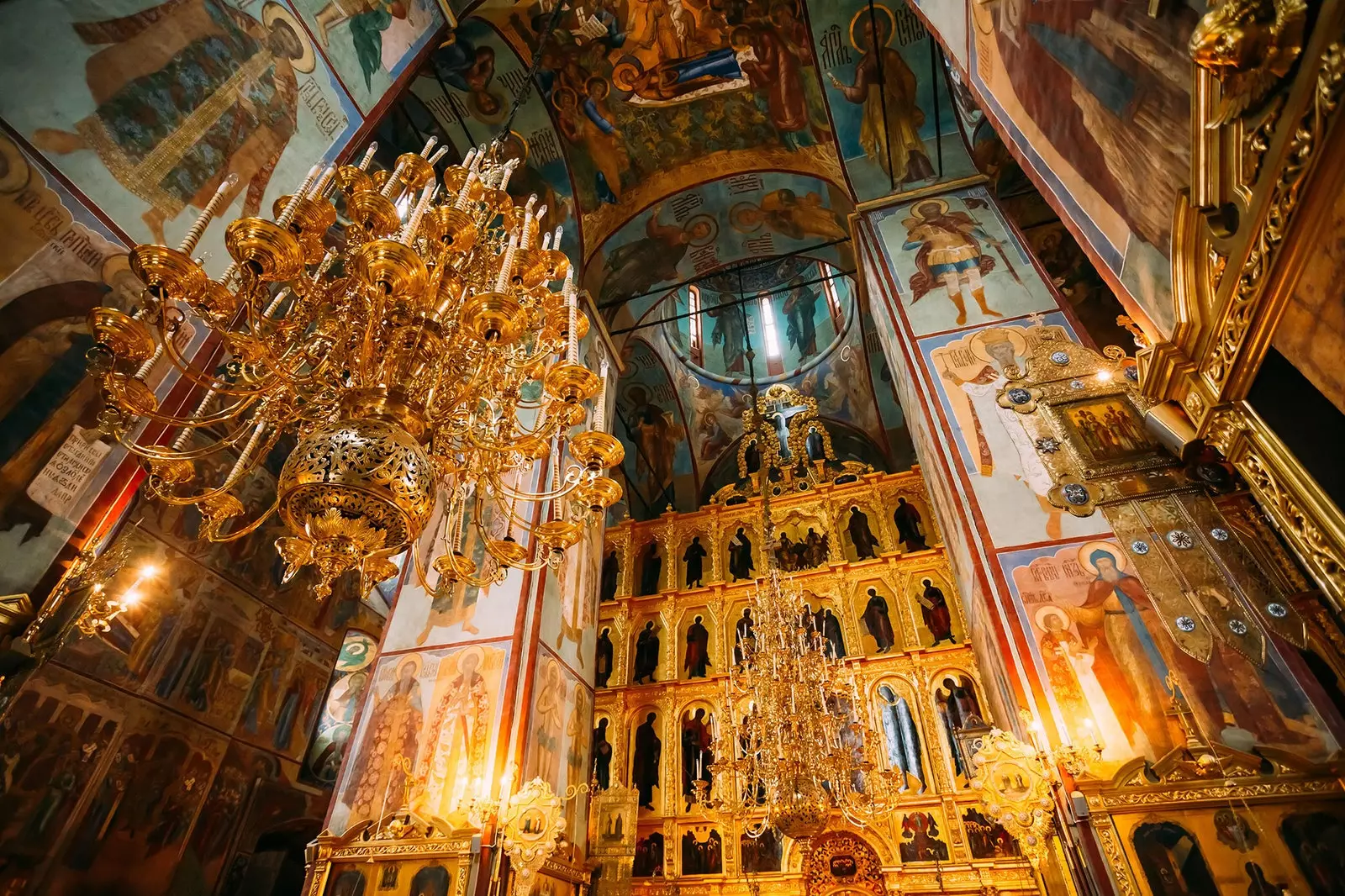
Cathedral of the Assumption, the "lavra" of the Trinity and St. Sergius.
SERGIYEV POSAD
Now we are left with two options: either we return to the Tretyakov gallery in Moscow to see Rubliov's last great work again, or we can continue pulling the thread and advance through the "golden circle" of the capital in the footsteps of the painter. Thus we arrive at Serguiyev Posad, where he would create the well-known Trinidad. Only one replica remains in the town, and the authorship of the other works cannot be attributed to our hero with certainty. At a minimum, we will visit the "lavra" of Trinity and St. Sergius, world heritage site for exemplifying "a functioning Orthodox monastery, with military features typical of the fifteenth to eighteenth centuries".
But, to our surprise, what we find is the other essential element of the film: the music of Vyacheslav Ovchinnikov. In the main chapel, groups of monks permanently take turns to accompany the gloomy temple with the same type of choirs, which give the film an abysmal depth. The most luminous, the most solemn and the most distressing of the Orthodox religion culminates with these difficult-to-qualify mantras. It is the last blow of effect necessary to understand To what extent is art imperishable if it captures the truth, To what extent do the senses lift us towards meaning if the essential remains. If God exists, it is art.
